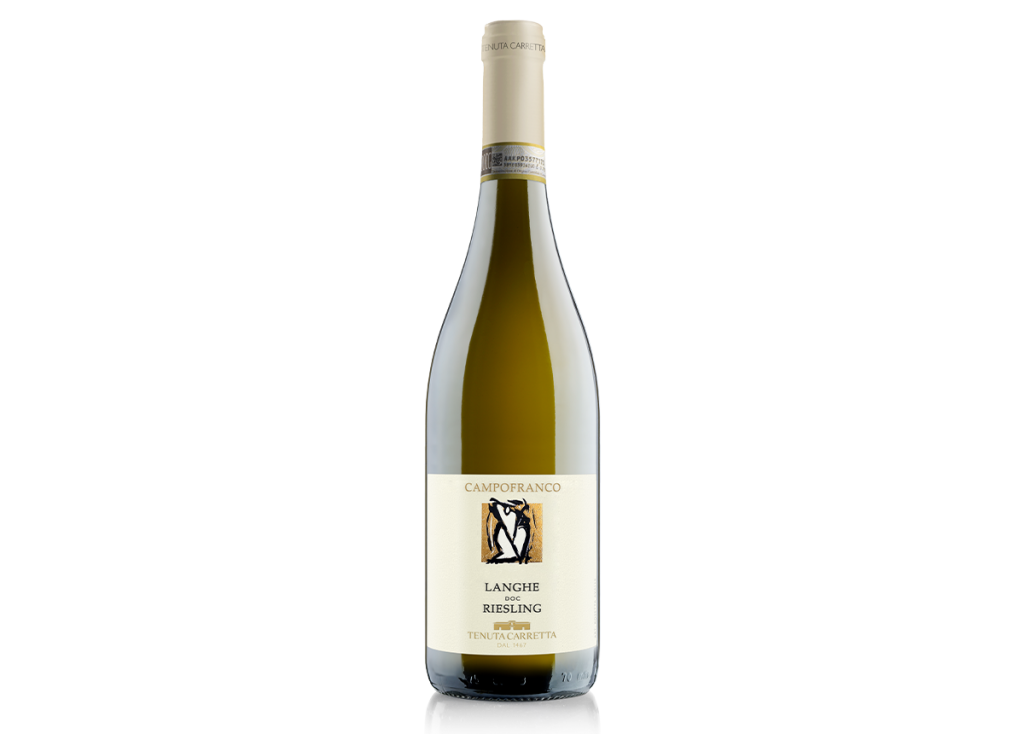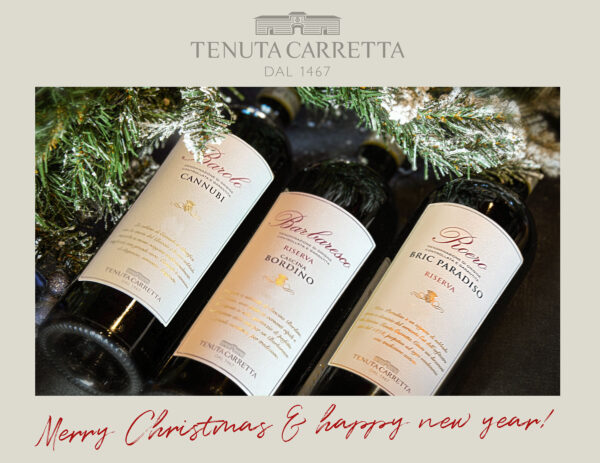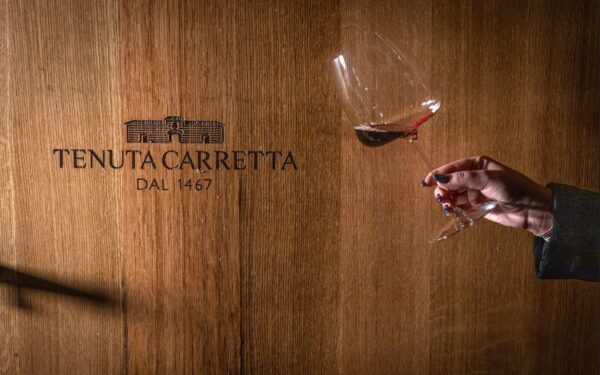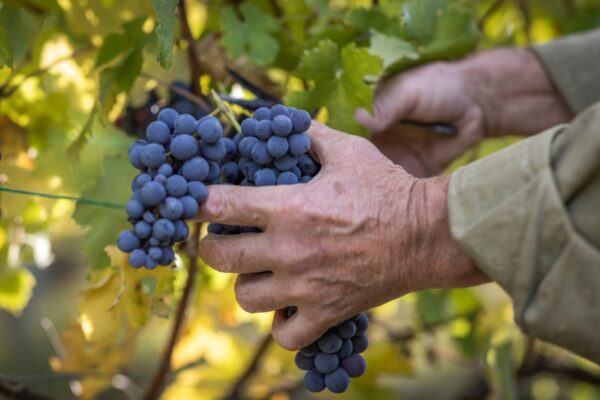• Winery, Hospitality, Wines
Welcome to Campofranco!
Reading time in
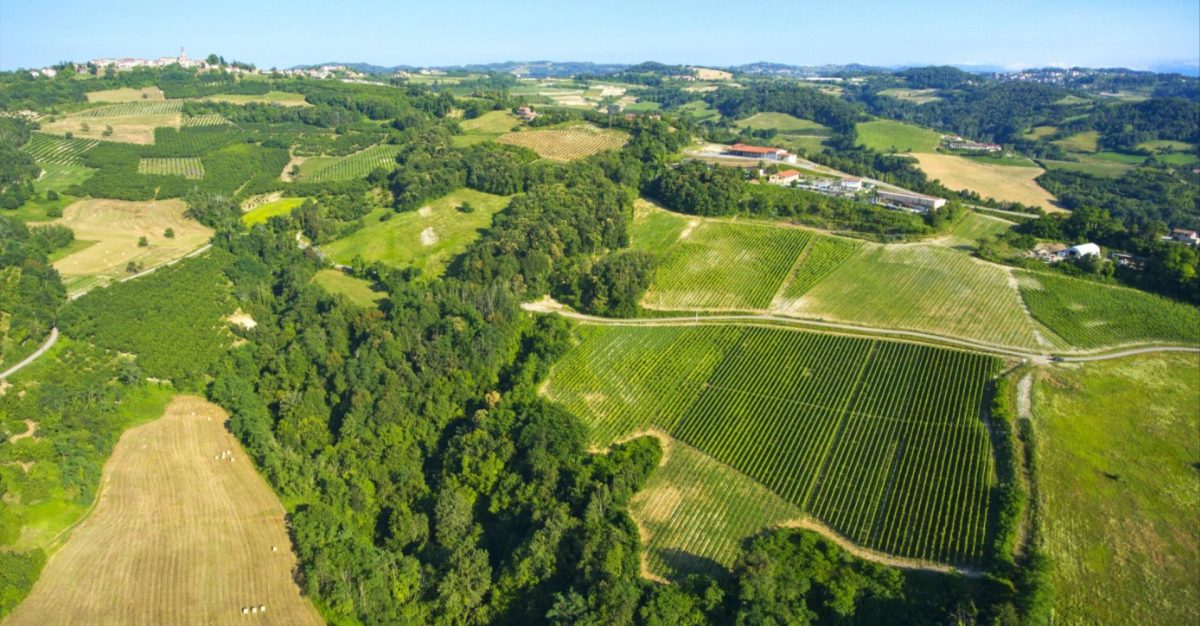
Tenuta Carretta welcomes a new label: the Langhe Doc Riesling “Campofranco”
The stone terraces found in the territory prove that viticulture was once present in Alta Langa. We are in the southern part of the Langhe, towards the Ligurian Apennines, an environment that has always been challenging for the vine due to the high elevation of the hills (which reach almost 800 m asl), exposure to the winds and rigid temperatures.
The phylloxera plague that destroyed the vineyards in the early 20th century as well as the progressive industrialization led to the depopulation of mountain areas, which eventually resulted in the abandonment of viticulture in favor of other cultivations, such as hazelnuts, or the allocation of pastures to sheep farming. The 90s have witnessed a gradual return of vine cultivation even in more unusual altitudes and at present – due to the general rise in temperatures – woods, pastures and hazelnut groves alternate with vineyards, defining a harmonious balance between man and nature.
These elements gave rise to Langhe DOC Riesling Campofranco: the result of Tenuta Carretta’s latest wine project in Cissone, in Alta Langa, launching for the first time with the 2020 vintage.
«Campofranco refers to the return to viticulture of an area that has not been cultivated with vines for a very long time, and therefore can be considered as “franco” or “unused”», says Giovanni Minetti, CEO of Tenuta Carretta. «This label represents a new phase in the winery’s efforts to reevaluate an area that is highly suitable to wine production – Minetti adds – A territory that, after the success of the Alta Langa sparkling wine, has been yielding surprisingly remarkable results especially due to the effects of climate change. Rhine Riesling is an extraordinary grape variety that produces a very complex and intriguing wine, revealing characteristic mineral aromas as well as a vertical, sharp and clean palate. This variety is particularly close to my heart because it has played an important role in my professional growth, even more than Nebbiolo. Together with Pinot Blanc and Pinot Noir, Riesling was the subject of my postgraduate thesis in viticulture and enology, which I achieved more than forty years ago. It was the result of the vinification (which I personally oversaw) of two experimental vineyards planted in 1975 in Alta Langa, specifically in Benevello and Serravalle Langhe, in conditions that – at the time – were particularly difficult».
Campofranco aims to highlight the exceptional combination of soil, climate, grape variety and human experience: an innovative way of enhancing tradition, which serves as the driver for development, as also seen in the design of the bottles. Langhe Riesling Campofranco is part of the “signature label” line dedicated to the artistic genius of Rosetta Avalle, a local painter and sculptor. Her familiar style gives a unique and original look on the feminine essence, continuously pursuing its representation using forms that can be round and motherly or pointy and austere, through shapes and colors, volumes and shadows.
the vineyard
The history of Rhine Riesling in Piedmont began in the mid-70s, when ampelographer Roberto Macaluso decided to plant two experimental vineyards in Alta Langa, in Benevello and in Serravalle Langhe, obtaining interesting results. In light of that experience, Tenuta Carretta followed along the same path knowing that the property in Cissone is highly suitable for vine cultivation, leading to the production of Langhe Riesling Campofranco.
The soft sedimentary soils have marine origin, unlike those found in Riesling’s original home in Mosel, which are rocky and not particularly deep. But the important difference is given by the microclimate of the Alta Langa: a territory characterized by little rain and remarkable lack of water resources towards the south-west exposure, which causes significant stress for the plants. This is also the main reason the Campofranco vineyard, located at about 630 m asl, has been designed with a prevalently northern exposure: this allows the vines to enjoy cooler temperatures and naturally preserve moisture in the soil, avoiding water shortage that is harmful to a balanced growth of the vine. The altitude contributes to slow down vegetative development, prolonging harvest period and producing wines with an intriguing personality. The vineyard covers a total area of 2.74 hectares and the vines present were planted from 2017 to 2021.
the wine
«Rhine Riesling is a variety that is uncommon and not widely cultivated in Italy, particularly in Piedmont, where Riesling vineyards currently occupy an area that stretches for a little over 60 hectares. This has definitely been a challenge for us, with a lot of lessons learned but lesser chances for confrontation. For example, identifying the ideal harvest period remains a critical matter because the variety has an extremely delicate balance: it took us two years to obtain the desired result» says Paolo Scaiola, Tenuta Carretta’s winemaker.
Following harvest in early October, the grapes were crushed whole using a pneumatic press while duly protecting the must from oxidation. After a few hours of maceration on the skins, the must fermented at 16°C followed by aging on fine lees in stainless steel vats for the ensuing eight months. Bottling was carried out in the month of June following harvest; the wine then aged in the bottle for at least 18 months.
The wine reveals a golden yellow color with green reflections, intense aroma and a typical and evident mineral note sustained by hints of green apple, dried flowers and a spicy finish. In the mouth, the wine unveils remarkable verticality: crisp, elegant, savory and lively, with a nice acidic vein, extremely pleasing and showing great personality.
Perfect for aperitifs, starters, shellfish and fish dishes, pasta and risotto: an ideal drink for the entire meal.
